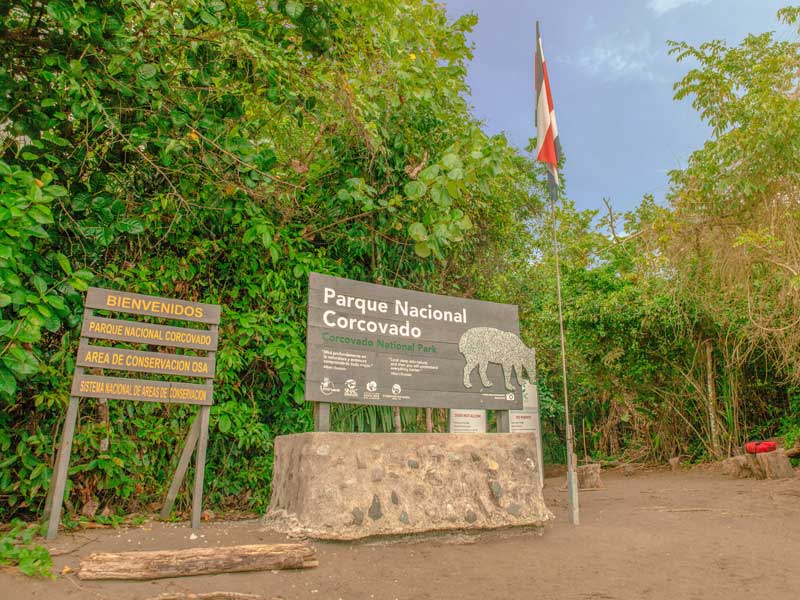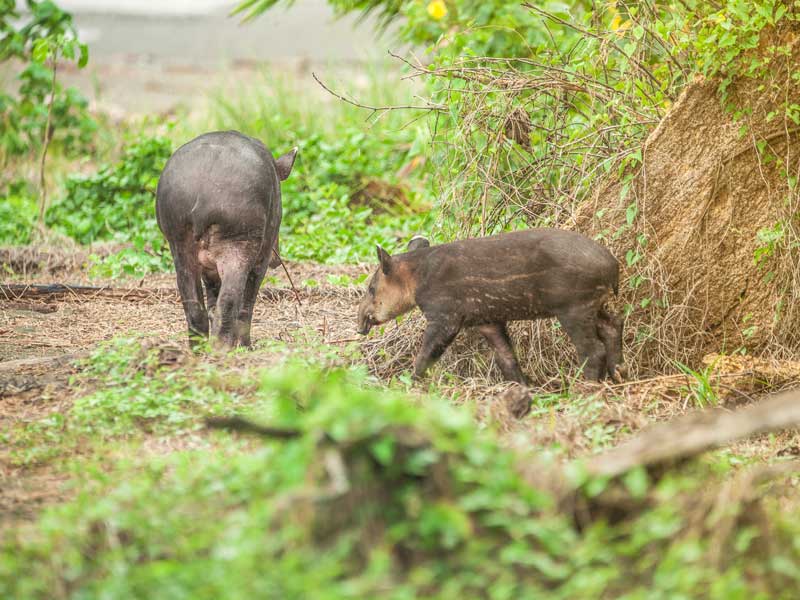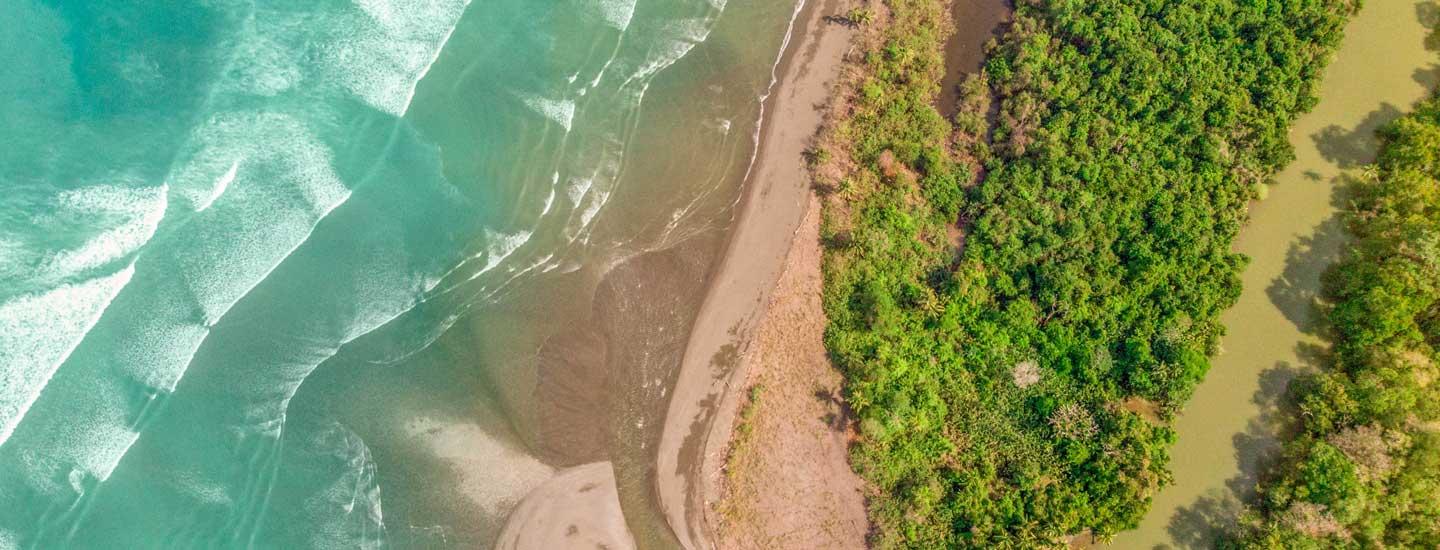If you’re ready to dive into a location that’s straight out of a nature film, a trip to Corcovado is just what you need! You may have read about the tapirs that cross the path right in front of you, or maybe you’ve seen the videos—but you can be sure that you haven’t seen 99% of what’s in store for you.
We experienced this adventure over three days, and we want you to have all the details you’ll need to pack your bags.
Let’s begin by planning your first steps, which will be crucial.
Let’s get the adventure started! Here are some tips:
It’s on your bucket list now, right? Well, don’t be surprised if you find yourself drinking coffee at the lodge and a family of tapirs passes right in front of your eyes: it happened to us and it was incredible. At night, close your eyes and listen to the natural concert that the forest will put on for you.
1. Reservation: to reserve your entry permit for the park, you’ll need to send an e-mail to reservaciones@parquecorcovado.org at least 30 days prior. They will provide you with information on the fee depending on the number of people planning to visit and will send you an account number to make the deposit. Once you send the payment confirmation, they will send you a reservation document for you to print out and show at the entrance when you arrive. If you need to do a day tour, you can write to pncorcovado@gmail.com.
2. Now, let’s get to accommodations and meals: the Integrated Development Association (ADI) of Carate is the organization in charge of coordinating these matters. You’ll need to write to reservaciones@adicorcovado.org or call 2735-5525. They will give you the details you’ll need to pay for food and accommodations on the days you’re planning to visit. You can be in the park for a maximum of 4 days.
3. The accommodations include: a cot with mosquito netting, sheets and a pillow. In terms of meals, they offer a wide menu that includes vegetarian options.
4. Prices of accommodations and meals: accommodations are ₡14,000 per person per night, breakfast costs ₡2,800, lunch and dinner cost ₡4,500. For those with healthy appetites, not to worry as the portions are generous.
5. Entrance hours and rates: open daily from 7:00 a.m. to 4:00 p.m. The park’s entry fee is ₡1,600 per day for Costa Rican citizens and residents; non-residents and visitors must pay US$15 per day. Children (ages 2-12) pay ₡500 (Costa Rican citizens and residents) or US$5 (non-residents) per day.

6. What do I absolutely need to take with me?Please read this carefully, as you’ll be very thankful for this list: don’t forget to take plenty of insect repellent, since you will be in the middle of the tropical forest, as well as sunblock and several changes of clothing (ideally athletic clothing that dries quickly). Bring a change of shoes, either hiking boots or comfortable athletic shoes, as well as a waterproof bag and a raincoat. Take a small pack with painkillers or anti-inflammatory medication that you’re used to, if you take any medication for particular conditions, don’t forget to bring it. If you are asthmatic or have a similar condition, it is recommended that you consult a medical professional for their go-ahead.
7. Best months to see it?In truth, you can go at any time of the year, but if you’re looking for the months with the lowest rainfall, the dry season lasts from December to March. You may get rained on more during other months, but the adventure remains the same. Remember that you’re not heading to the beach, but rather to a pure adventure destination.
8. Is there a day tour? There sure is: there is a day tour that leaves from Drake Bay, but you have to make your reservations in the same manner we mentioned at the beginning of this post. The tour leaves at 6:00 a.m. on a boat from Drake Bay and arrives at the refuge around 7:30 a.m. The tour will last until midday, and you’ll be heading back after lunch. We should remind you that the path from Playa Sirena to the refuge is about 2 km (1.3 miles) in length.
9. How did we get there? We arrived in Sector Sirena. The drive from San José to Sierpe takes around 4 hours, and we took a boat from Sierpe that took about 40 minutes to reach Drake Bay. There are two boats that leave for Drake Bay: one at 11:00 a.m. and the second at 4:00 p.m. From there, we took another boat—the timing here varies because it is a private service. This leg of the trip took us to Estación Sirena in an hour and 40 minutes. Visitors are recommended to enter by this sector as the probability of seeing animals is greater. We left our car in Sierpe, where parking costs around US$6 per day.
10. Other entry points? The other option to explore Corcovado is by Sector de Los Patos, near the Reserva Guaymí. The drive from San José on this route, however, can last 6-7 hours, which is why we advise you to take a flight to Puerto Jiménez, which takes about 45 minutes. The trail from Los Patos to the Sirena lodge is about 20 km (12.4 miles) long and takes about 8 hours depending on the participants in the tour. You’ll be able to see the Río Rincón, a waterfall and plenty of forest. The difficult path means that a guide is necessary for this route. It is important that the difficulty level increases beginning in May because of the onset of the rainy season.

The trail that links Sirena and La Leona (another sector) is some 14 km (8.7 miles) long, and it is another 26 km (16.2 miles) along the beach from Sirena to the San Pedrillo sector. It should be mentioned that visitors cannot enter the water in Sector Sirena, since there are crocodiles and a major presence of bull sharks. Don’t worry about the tapirs, though—they’re not violent, they’re ADORABLE.
11. What is sleeping in the lodge like? We had a great time, the lodge is very well set up. It’s a wooden construction with a little store where you can buy necessities such as toothpaste, toothbrushes, soap, coffee, etc. The medicine selection is not particularly wide, but you can get some of the basics. It has two platforms and a room to store luggage. The dormitories do not have outer walls, so the many mosquitoes are kept out using netting. The lodge can sleep 75 people per night, so there is plenty of space. There are corridors to the kitchen and bathroom, with common showers and men’s and women’s bathrooms. Everything is powered by solar panels. Visitors cannot leave the lodge after 6:00 p.m. for safety reasons, so it is better to wait for first light to continue the adventure.
12. What animals can I see? Along with all of these recommendations, we have to say that we’ve never seen so many animals in a single place. Did you know that three different monkey species live in the park? It’s an ecosystem that offers so much for the animals that live there: you can see howler monkeys (known as congos), spider monkeys and capuchins (called mono cariblanco locally). It’s the only place in the country where all three can be seen at once.
We were able to see a family of tapirs with their baby; it was just too much! We saw a multitude of birds as well as different species of peccary, a wild pig that lives in the rainforest.
The species you may encounter on your visit to the forest include jaguars, pumas, ocelots, jaguarundis, margays, lowland pacas, agoutis, and many more.
We wholeheartedly recommend this adventure—every Costa Rican should see the wealth of their country, and what riches Corcovado has to offer! It is marvelous to see the amount of biodiversity held within these 42,560 hectares, not to mention the 3,354 hectares of marine area that are also part of the park.





